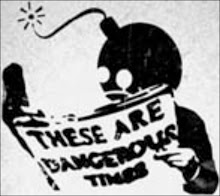The discovery was a vindication for some and a surprise to others. For decades, palaeontologists had fought over different visions of the rise of early humans. Some championed the “Out of Africa” model, which says that all of us descend from a small group of ancestors who came out of Africa, swept the world, and replaced every other group of early humans. The most extreme versions of this model said that these groups never had sex, or at least, never bred successfully. The alternative – the multiregional model – envisages these prehistoric groups as part of a single population that met and mated extensively.
To an extent, these are caricatured versions of the two models, and there are subtler variants of each. Still, early evidence seemed to support the extreme Out of Africa version. When scientists sequenced the mitochondrial genome of Neanderthals (a small secondary set of genes set apart from the main pack), they found no evidence that any of these sequences had invaded the modern human genome. The conclusion: Neanderthals and humans never bred.
The full Neanderthal genome disproved that idea, but it also shifted the question from whether humans had sex with Neanderthals to just how much sex they had. As I mentioned in New Scientist earlier this year, modern humans were spreading into areas where Neanderthals existed. “It doesn’t necessarily take a lot of sex for genes from a resident population to infiltrate the genomes of colonisers. When an incoming group mates with an established one, the genes they pick up quickly rise to prominence as their population grows.”
Now, Mathias Currat from the University of Geneva and Laurent Excoffier from the University of Berne have weighed into the debate. They simulated the spread of modern humans from Africa and their encounters with Neanderthals throughout Europe and Asia, to work out the levels of sex that would have transferred Neanderthal genes to modern genomes at their current level.
The duo concluded that sex between the two groups was somewhat of a fringe activity. Fewer than 2 percent of the possible sexual encounters at the time happened between a human and a Neanderthal and produced a fertile, healthy hybrid child. That’s a conservative estimate – the true odds might have been even lower. “Such interbreedings were strongly prevented or very rarely successful,” says Excoffier...
Continue reading
Ed Yong @'Discover'











No comments:
Post a Comment